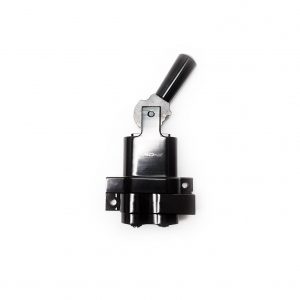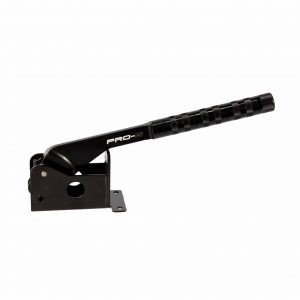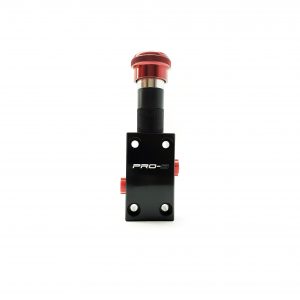Braking, Cooling & Protection
Car Breaks – When should I change my brakes?
Car breaks are vital – When the vehicle’s braking system is compromised, don’t risk your safety and the safety of your passengers. Bring it to a mechanic as soon as possible to have it checked for any malfunctions and have it repaired in a jiffy because each part of the braking system is a necessary component for the whole set-up to function properly, each part needs to be fully operational.
However, certain factors that the vehicle is put through does have a direct effect on the degradation of the car breaks system. Unsurprisingly, one of them includes how hard you step on the brakes. While braking should be done slowly to extend the lifespan of the brake pad, if the situation calls for it and safety is on the line, brake as sudden as needed. Stop-and-go traffic and steep elevations are also culprits to shortening the brakes’ lifespan.
What is engine braking?
First, it’s important to understand how an engine works. Through the intake manifold, air is sucked into the engine. Then as the accelerator pedal is stepped on, the throttle valve opens and air enters the cylinder during the intake stroke which is needed for the combustion process to take place.
Engine braking happens when the throttle valve closes when your foot is removed from the accelerator pedal. Air still enters the valve but only very small amounts reach the engine; thus, creating a vacuum in the intake manifold. The vacuum contributes to the inefficient combustion within the engine that it loses power and the car loses speed. This is applicable only to manual transmission vehicles.
While engine braking is often frowned upon, it does have its fair share of advantages once mastered and executed properly. Because you don’t step on the brake pad as often, the life of the component is increased. Engine braking is also handy for downhill drives with a gradual descent. Hitting the brakes on a descent constantly will wear out the brake disc and fade it. Fuel usage is lessened because throttle remains closed while the driver’s foot brakes by removing his foot on the accelerator and lessens the fatigue that comes with driving and braking.
How to bleed brakes?
You’ll know it’s time to bleed your brakes when the brakes feel spongy and low. This usually happens when you wear the brake pad to thin that the brake fluid levels have become too low inside the master cylinder reservoir. Air may have entered and compressed creating a layer of spring between the brake pad and the fluid. Bleeding your brakes should be able to flush out that air. Here’s how:
Have a fresh can of brake fluid ready. The car needs to be suspended with its wheels removed but the latter part isn’t necessary if you can reach the bleeder valves with a wrench.
Suck out the old fluid and any extra debris from the master cylinder reservoir. You can use a syringe or a makeshift one via a turkey baster. Keep the old brake fluid in a jar for proper recycling and disposal.
Clean the reservoir with a rag and wash with soap and water or brake fluid cleaner any of the brake fluid that may spill around the area.
Regularly pour the fresh brake fluid into the master cylinder making sure no air is being pulled in from the side of the reservoir. Continue refilling making sure that the fluid does not reach more than half empty during the bleeding process.
Replace the top and place cap and tighten on the master cylinder reservoir.
Charge the lines with new brake fluid by pumping the brakes about 15 times. This gets the pressure ready needed to begin bleeding the lines.
Loosen the bleeder bolts but keep them closed. A box wrench is ideal for the job and if you can reach them with the tool, you may not need to jack up the car and remove its wheels.
Put a spacer between the floor and the brake: a 1×4 in” piece of wood should do the trick. This prevents the brakes from coming too close to the floor which can cause an internal leak in the master cylinder.
On the tire furthest to the bleeder bolt, hook a clear plastic tube. Place the other end of the tube in a jar filled with 2-3 in” fresh brake fluid to keep air from entering the back the brake lines.
Have someone help you press and hold down the brakes as needed. Use verbal cues to ensure that you’re both in sync.
With the wrench, turn the bleeder bolt a quarter turn to loosen it. There should be a noticeable trickle down the line. Make sure that whoever is assisting you continues to apply pressure and holds it down.
When the trickling stops, close the bleeder valve by turning it the other way. Have your assistant lift off the brakes to release the pressure. This is just one cycle and may take about 8-10 cycles to clear out the brakes.
This process needs to be repeated until the fluid that bleeds out is clear. Make sure the fluid in the reservoir does not reach the half mark or else air can get sucked back in the lines. Do the same process on all 4 tires.
Symptoms of faulty brakes
Once wear and tear starts to get to your car breaks, it’s time to consider replacing them. Generally, brake pads last about 50,000 miles, some pushing up to 70,000 miles even. But with certain conditions like stop-and-go traffic, some may only reach 25,000 miles.
Brake pads are equipped with metal hairs underneath to signal that the grips are wearing thin. Once this grippy material wears thin, you will notice a squealing or grinding noise when braking. This means it needs to be replaced. Other symptoms of faulty brakes that require replacing include the car shakes when braking and the steering wheel shakes when braking.










